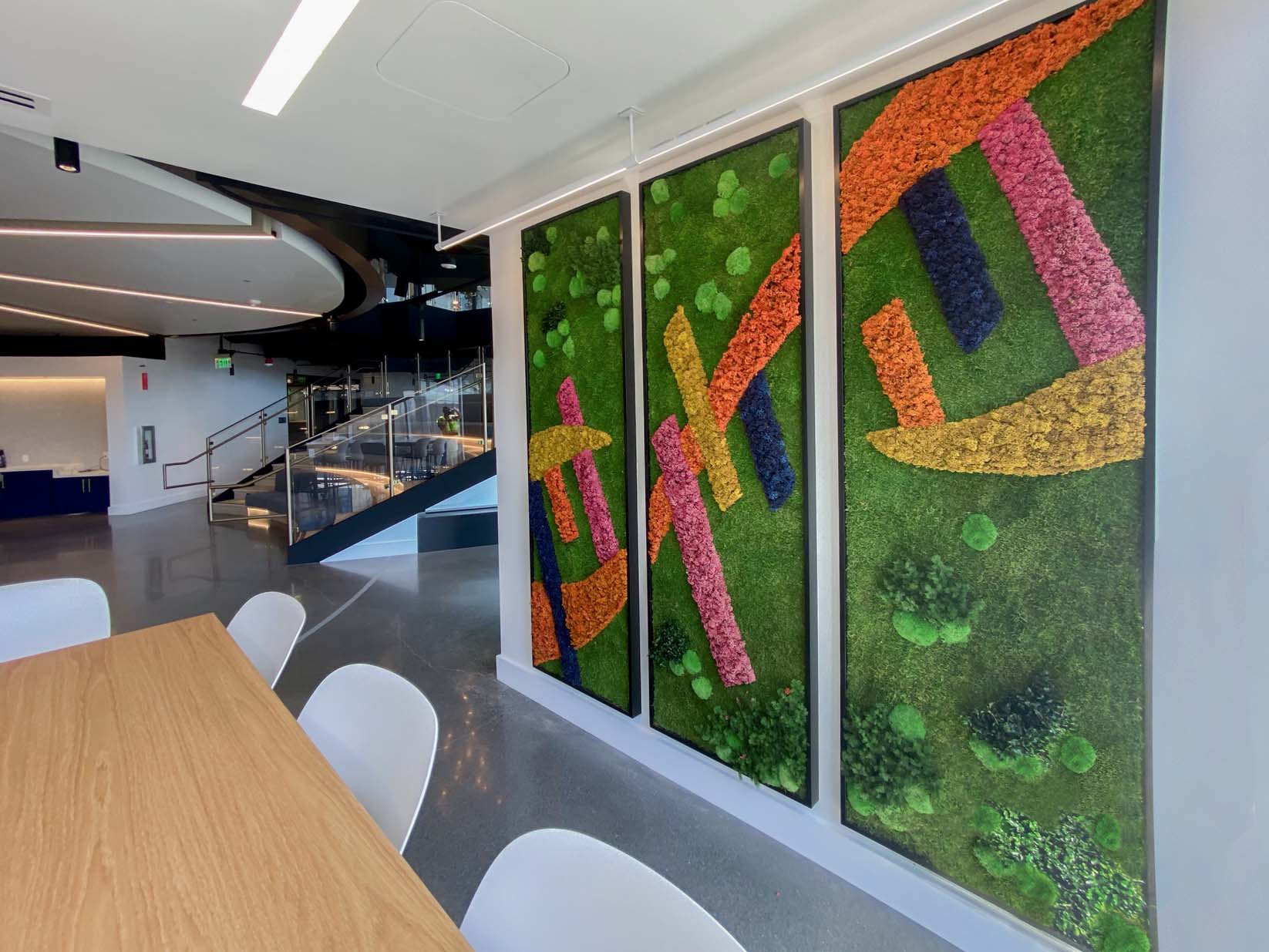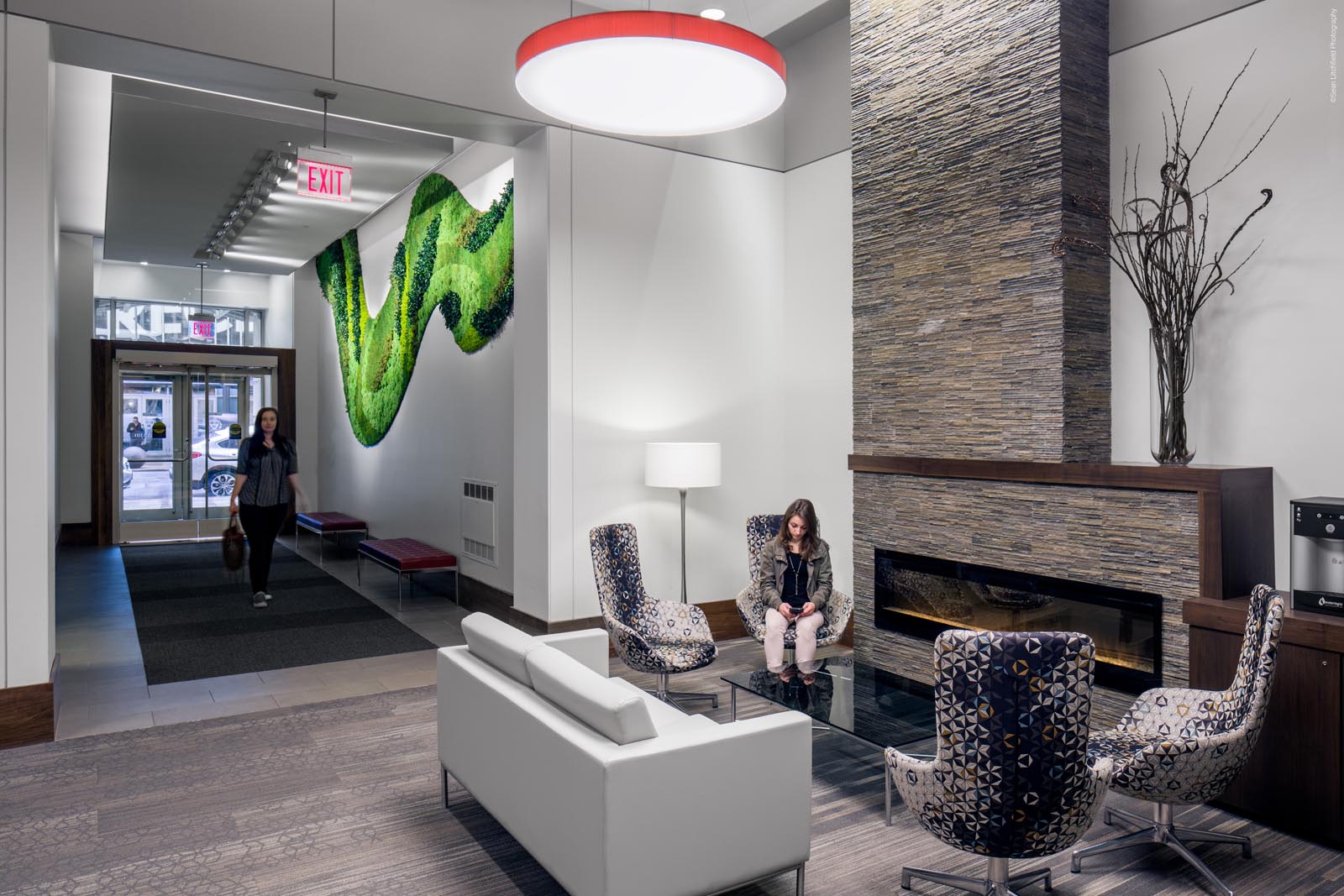Industry Insights
Discover the path to Wholesome Design with Garden on the Wall®. As industry leaders in biophilic design, we invite interior designers, owners, and general contractors to explore our thought-provoking articles, insightful blog posts, and extensive resources on Biophilia, Neuroaesthetics, Biomimicry and Neuroarchitecture. Dive deep into the wealth of information to understand why Garden on the Wall® is the top choice for creating sustainable, safe, and healthy human-centric spaces that elevate well-being.
Discover the Benefits of Wholesome Design for Your Space
Wholesome design is one that is agreeable and positive, both superficially and substantially. From Mental Health to Neuroaesthetics, Biophilia, Indoor Environmental Quality, Biomimicry, and Neuroarchitecture, all aspects of human-centric indoor spaces are mindfully curated through wholesome design.
Transform Your Space with Nature-Inspired Design Solutions
Craft mindfully designed human-centric healthy environments

Spatial Wellness
The built environments where we live, learn, work, sleep, and heal are shaped by the action and interaction we experience in those designed spaces. The design of an indoor environment influences our mood, cognitive abilities, and even circadian rhythms.
WHAT WE KNOW
Insights from Garden on the Wall®
Explore the latest trends in biophilic design, sustainability, neuroaesthetics & neuroarchitecture
TODAY’S DESIGN principles are informed by the conclusions of scientific studies as well as evidence-based design principles and will continue to evolve. This constant progress will enable designed spaces to better serve the occupants of these built environments.
In-depth studies on human interaction with and stimuli from designed spaces help us understand a deeper level of human emotional response and how to channel good design to limit negative stimuli and amplify positive stimuli.
INTEGRAL TO THE SUCCESS of any designed space is the community that is nurtured in and around it. Occupant quality of life is the end goal of today’s indoor environments. Gone are the days of purely functional spaces, walls, and doors built to the lowest common denominators, with no consideration for aesthetics, materials - other than on a cost basis - acoustics, design harmony, art, lighting, and all the other elements that make a space something desirable, not just survivable. All these factors contribute to positive responses in the built environment.
IN THE LAST CENTURY, designed spaces often sought to achieve exclusivity. A prestigious address, a clublike atmosphere with boardroom sensibilities, and a design meant to impress, intimidate, and thus exclude.
NEURODIVERSITY REFERS to the natural range of differences in how we think, process information, learn, and interact. This includes all the subtle variations in human neurocognitive functioning. It is estimated that 1 in 7 people have some form and degree of a neurodiverse condition, such as ADHD, autism, dyspraxia, dyslexia, or Tourette’s syndrome.
IN THE CURRENT HIGH-END, grade-A commercial real estate biosphere, it is a tenant’s market; building owners and managers are competing for tenants, especially in the workspace arena.In turn, these employer tenants are competing to attract and retain talent – and the bar has most certainly been raised.
Microsoft, Google, Apple, Amazon, and other trendsetting companies have transformed employee expectations of workplaces including recreational spaces, sanctuaries, and other amenities, plus mandatory architectural and design uniqueness, and wow factors, from soaring ceilings to biophilic installations.
BLOG
Garden on the Wall® Blog
Design and trends are everchanging, but good design is always universal. Our blog delves into the fascinating world of biophilic design, sustainability, neuroaesthetics, biomimicry, restorative design, regenerative design, salutogenic design, neuro-inclusivity, neuroarchitecture, and many more exciting concepts. Explore how these principles can be applied to create human centric spaces that positively impact the well-being and productivity of occupants. Discover valuable inspirations that will help you stay at the forefront of design trends and create environments that not only look stunning but also promote health, connection, happiness, and overall well-being by the use of Garden on the Wall®.

Custom Preserved Moss Walls in Healthcare Evidence-Based Design for Healing Spaces
Explore how preserved moss walls elevate healthcare design through material safety, financial efficiency, innovative applications, and sustainability. Discover award-winning installations and how these biophilic solutions are shaping the future of healing environments.

Nature-Inspired Spatial Planning: Optimizing Flow and Function
Nature-inspired spatial planning uses biomimicry, organic flow, and biophilic zoning to optimize interior spaces for function, adaptability, and well-being. By integrating preserved greenery, designers enhance sensory experience, reduce maintenance challenges, and support sustainability creating intuitive environments that align with human needs and the natural world.

Biophilic Design for Educational Environments: Nurturing Learning Through Nature
Explore how biophilic design is transforming classrooms, libraries, and learning spaces into high-performance environments that support focus, creativity, and well-being. Learn why preserved nature is a smart, sustainable choice for educational design at every level.
WE CARE
Our Commitments
At Garden on the Wall®, we are committed to the betterment of our planet, environment, and the health of our population. We strive to foster well-functioning communities and employ evidence-based practices for the good of all. These commitments are not merely talking points; they are integral to our identity. Continuous improvement is in our DNA.
We are proud to be committed. . .










